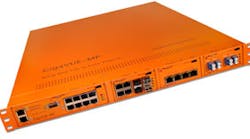While communicating a strong ROI message has always proven difficult for technology companies, 2020 has made it even harder as attack surfaces expanded and new threats exposed additional company vulnerabilities. With a shortage of resources, companies responded to major disruption across their organization, leading to consistent reevaluation of funds. Fortunately, this doesn’t mean that security budgets will be slashed. According to EY, while 73% of organizations anticipate budget changes to their cybersecurity program, 32% of those organizations expect an increase in funding to help respond to these expanded threats.
When operating within this challenging environment, effective ROI messaging is more important than ever in order to drive sales and adoption of these new and effective security measures, as well as prioritize a balance between savings and innovation. Aside from helping to justify planned purchases, proper ROI-focused communications can help with the approval for unbudgeted purchases, and to proceed with two competing projects instead of having to choose between them. This approach means organizations won’t have to choose between saving money and protecting their company.
With that said, the world is currently saturated with ROI messaging, so moving into the new year, credibility is key. This can be shown with an ROI analysis and proof points for saving and better long-term security investment.
Be Proactive & Upfront
When communicating about ROI, all objectives must be addressed at the very beginning of any conversation, agreeing that most ROI calculations are full of unrealistic “soft savings” that do not stand out among long-term planning. Any vague promises of savings that involve eliminating employee roles or increasing customer satisfaction are unrealistic and hard promises to keep. A CFO may immediately ignore such guarantees and look to actual hard savings, using a company’s own unique customer data. Extra steps should also be taken to have ROI methodologies reviewed and validated by an independent third party in order to show true savings and value.
As an example, let’s look at the forecast made by Gartner around the spending on data center systems. There was a 10.3% decrease in spending on data centers in 2020, due to limited cash flow amid COVID-19 challenges. Digging deeper, however, this investment is projected to have the second-highest level of growth (5.2%) in 2021 as hyperscalers expedite global data center build outs and organizations again begin data center expansion plans while employees start returning to their physical offices. As a result, Gartner reports data center spending to reach $200 billion in 2021. Discussing these setbacks and market expectations upfront, while keeping the realistic needs of the future in mind, will allow for a productive conversation around ROI with partners and customers.
Speak with the Right People
There is a limit to what an organization can do without taking the time to optimize ROI messaging - while communicating with the appropriate audience. No matter how accurate ROI messaging may be, it will fall on deaf ears if you cannot collaborate with the CFO. If a CFO is unavailable, the procurement or finance departments must be involved. These are the folks dealing with the budgets, purchasing decisions, and day-to-day needs of the business.
While the CFO and finance team may not be your typical audience of buyers, it’s often your IT or security buyer who needs to convince the CFO for the extra budget. It’s also the CFO who is going to ask the most ROI-focused questions around contract commitments, value over time, cost-savings, and more, so it’s best to ensure you have the right messaging and responses to handle that conversation.
Remain Realistic
While metaphorically we look to the new year as a fresh start, there is by no means a fresh start to the world of business, continually plagued by the obstacles and disruptions of the previous year. Organizations will still need to face the ongoing challenges posed by the pandemic, coupled with the consequences of an election year, and these may have long-term effects on the future and recovery.
A solid return on investment will remain key to bringing organizations up to speed on their aggressive cybersecurity journeys. This means being able to do more with less is imperative.
Taking this realistic view might create a dim outlook at first, but it will also encourage organizations to look at their existing tools instead of new ones, in order to save money and maximize existing investments. When investments that capitalize on this ROI messaging around the optimization of current security tools accompanied by new initiatives, it can reinforce a new reality of cost savings.
A logical result of a well-oiled organization is improved cost savings, where the organization can still experience tangible ROI by using effective and innovative cybersecurity solutions. Keeping this in mind while establishing continued credibility when communicating ROI messaging will ensure further protection against growing cybersecurity risks in 2021, while still keeping savings top of mind after a challenging year.
About the author: Shane Buckley is the President and Chief Operating Officer of Gigamon.



